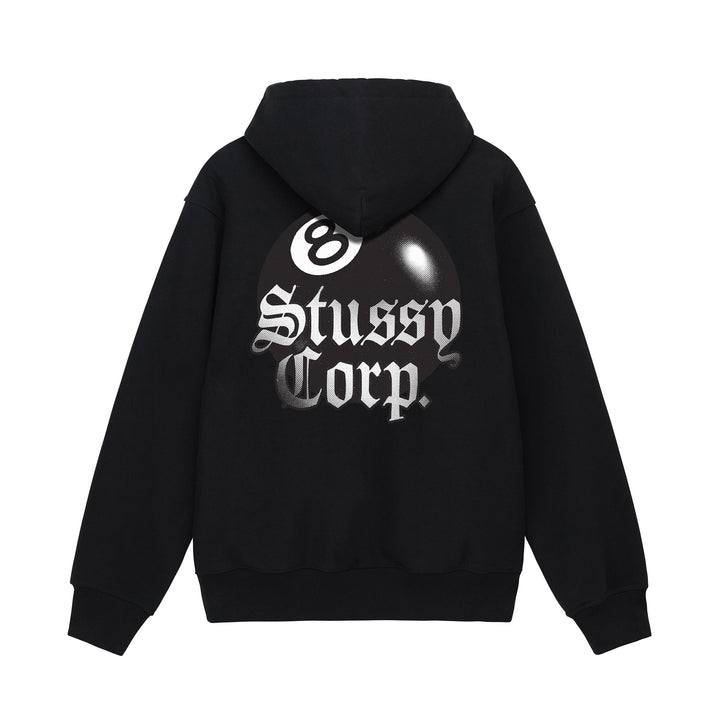
How to Spot Authentic Limited Edition Stussy Hoodies
If you’re into streetwear, you already know the kind of weight a Stussy hoodie carries. Especially when it’s a limited edition drop, there’s an entirely different level of demand and hype. But that’s exactly why spotting a real one from a knockoff can be tricky. The market is packed with replicas, and they’re getting harder to detect with the naked eye. So if you’ve ever hesitated before pulling the trigger on a resale hoodie, or you’ve questioned whether that vintage piece at the thrift shop is actually worth the price, this article will walk you through the subtle but important details that set the originals apart.
Pay Attention to the Tag Details
One of the first things you should do when inspecting any stussy hoodie—especially limited edition releases—is check the inside tag. It may sound obvious, but it’s not just about whether the tag is there. It’s about how it looks and feels. Authentic tags usually have clean stitching and are centered properly. The Stussy font is sharp, consistent, and properly spaced. A fake might have a slightly off-kilter font or stitching that looks lazy. For limited edition runs, the tags sometimes include extra details, such as a collaboration brand name or a run number.
Vintage Stussy hoodies, especially those from the early 2000s or the ’90s, might show wear on the tag—but that wear should match the rest of the hoodie. A worn-out tag on a hoodie that otherwise looks new is a red flag. Also, limited pieces might include country-of-origin tags or wash instructions that differ from mass-produced ones, so it’s worth comparing those to known authentic examples.
Look Closely at the Stitching Quality
One thing knockoffs can’t easily replicate is the consistency and durability of stitching found in real Stussy hoodies. If you’ve ever owned one, you know they’re built to last. Limited edition versions are sometimes even made with higher precision since they’re not being pumped out in huge batches.
Take a look at the seams along the shoulders, cuffs, and hem. They should feel tight and lie flat, with no loose threads or uneven lines. The area around the hoodie pocket should also be neat and strong. Counterfeit items often skip the quality check at this level, so poor stitching is one of the easiest signs to spot if you’re unsure. And remember, real limited edition hoodies are meant to feel premium—not just in the fabric, but in how they’re put together.
Examine the Print and Embroidery
If your Stussy hoodie has any kind of print—whether it’s the classic logo or a limited run graphic—you’ll want to study the details. Originals usually have a certain depth and sharpness to the print. It’s not faded unless it’s genuinely old, and it doesn’t peel easily. The ink on fakes might feel rubbery or plasticky, while real ones are often more embedded in the fabric.
Embroidery, when present, is another strong authenticity indicator. Stussy’s embroidered logos or designs are detailed and balanced. If it looks slightly crooked or has gaps in the threadwork, it’s worth taking a second look. Also, with limited editions, the design might feature special themes or symbols. If the design feels rushed or low-effort, it probably is.
Know the Drop History and Design Themes
This might be one of the less technical but more impactful ways to tell if you’re looking at a legit limited edition Stussy hoodie. If you’re buying something that’s supposed to be from a special drop, do some digging into that drop’s story. What was the theme? Who was involved in the collab? What colors were released? Even if you don’t use external sources, just comparing details from official lookbooks or product shots can help.
Some designs are one-time collaborations, like with artists or other brands, and they usually follow a visual language or narrative. A hoodie that doesn’t line up with the known theme—maybe the colorway doesn’t make sense, or the graphics feel random—is worth questioning. Knowing the context behind a drop not only helps you avoid fakes, but it also deepens your connection with what you’re wearing.
Feel the Fabric Weight and Texture
One of the best tells of a real Stussy hoodie—especially the limited ones—is the feel. The material is heavy but not stiff, soft but not thin. Real Stussy hoodies feel broken-in without feeling cheap. Most of the time, they’re made of high-quality cotton blends that age well.
If you’re holding a hoodie and the fabric feels too light or overly stretchy, it’s probably not the real thing. Limited edition hoodies sometimes use slightly different fabric from the standard lineup to reflect the exclusivity of the drop. It’s subtle, but noticeable when you’ve handled enough of them. Also, real hoodies often have thicker hoods, sturdier drawstrings, and high-quality ribbed cuffs.
Consider the Price—but Don’t Rely on It Alone
Let’s be real—if someone’s offering you a limited edition Stussy hoodie for a super low price, there’s probably a reason. That said, price alone isn’t proof of authenticity. There are resellers who’ll charge high just because they know people assume expensive means real. What you want to do is combine the price with all the other factors: quality, stitching, tag details, and history of the release.
Sometimes, collectors let go of pieces for decent prices because they need the cash or are downsizing their wardrobe. So if a deal feels good but not too good, trust your gut but still do the homework. And don’t forget—if the price sounds suspicious and the seller seems rushed or evasive, that’s a signal to back off.
Trust the Source, Not Just the Hype
Where you buy from matters. Whether it’s a trusted peer-to-peer marketplace, a consignment shop, or a collector you’ve followed for a while, your source can tell you a lot about the authenticity of the hoodie. That doesn’t mean you should assume something is real just because the seller is popular—but transparency goes a long way.
When sellers are confident their piece is legit, they usually have no problem sharing extra photos, close-ups of tags, or even a little background story about how they got it. If you’re buying in person, even better—you can inspect everything in real time. Avoid sellers who dodge questions or don’t want to show more angles. Limited edition drops deserve better than shady transactions.







